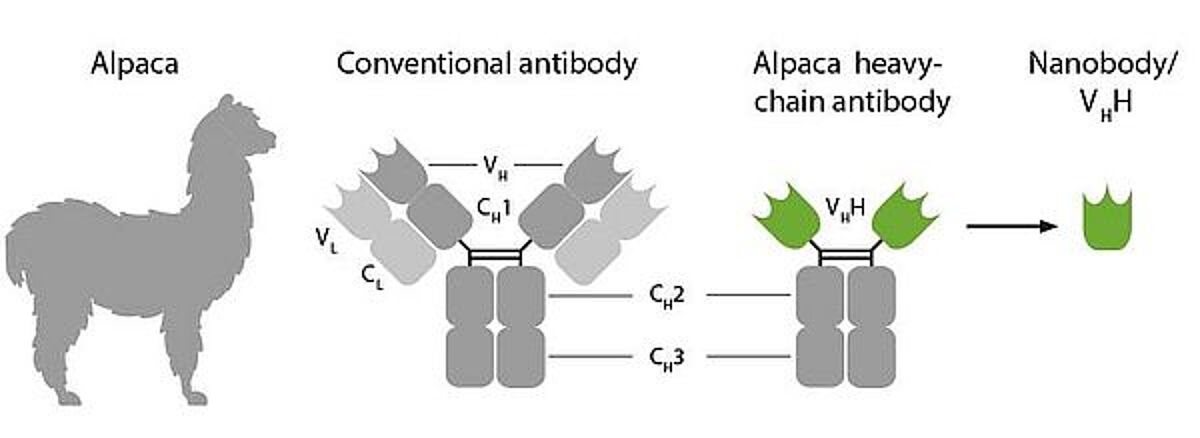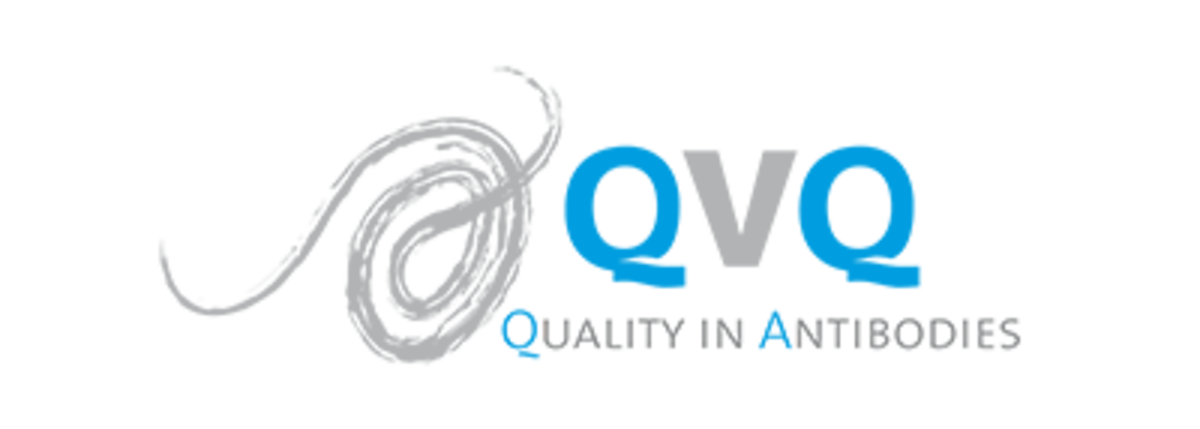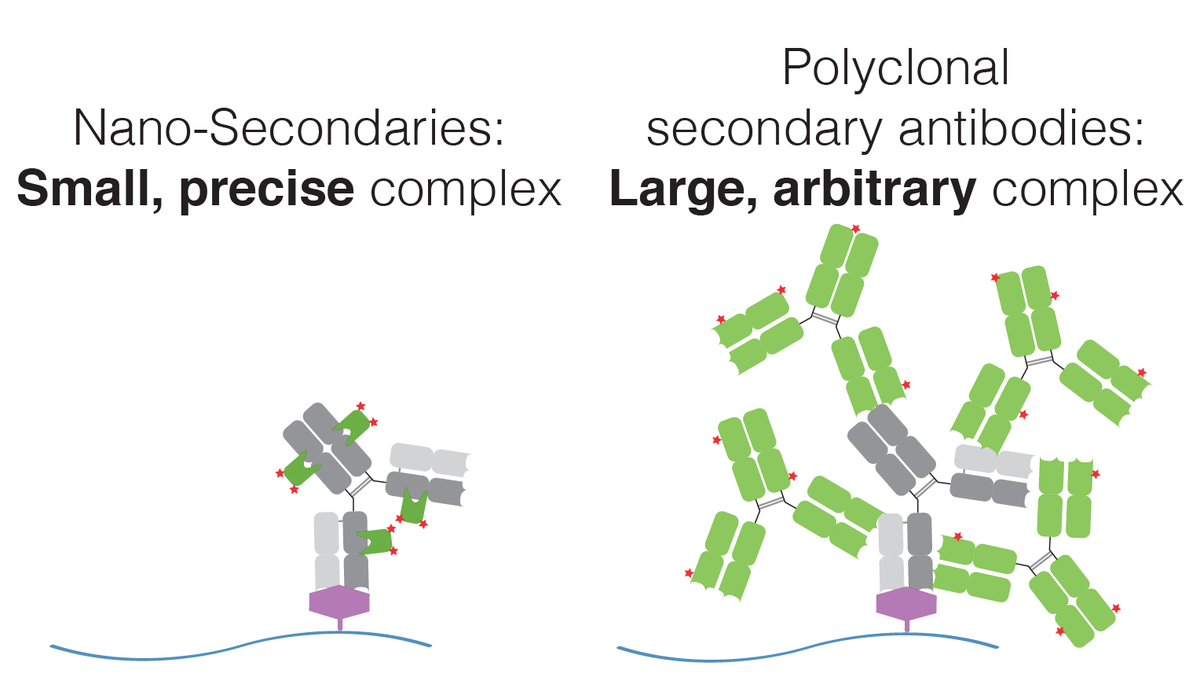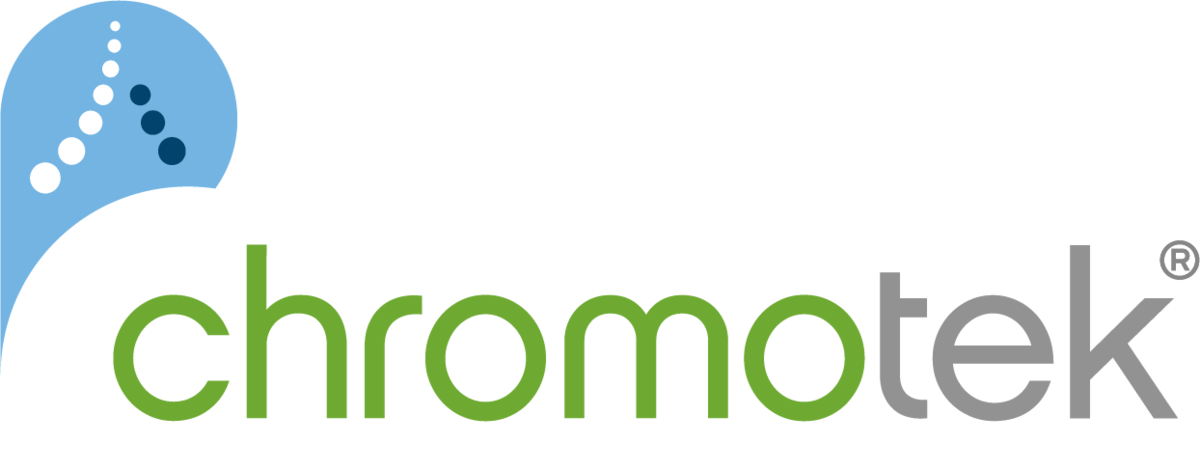What is a nanobody?
Camelid heavy chain only antibodies
Conventional antibody units consist of two heavy-chains and two light chains which are connected by disulfide bonds. The most common type of antibody found in human blood is the IgG immunoglobulin, which has a molecular weight of 150 kDa. For a long time, it was thought that all antibodies had this structure of light and heavy chains.
Finally in the 1980s, a group of smaller antibodies was discovered from frozen dromedary serum: heavy chain only antibodies (HCAbs). HCAbs are devoid of the CH1 of the heavy chain and both light chains, yet remain fully functional. All members of the Camelidae such as llamas, alpacas and camels produce HCAbs in addition to conventional IgG.
Nanobody or single variable domain antibody
Heavy-chain only antibodies undergo normal selection and maturation by the animals’ immune system. For this reason, HCAbs and their variable domains can exhibit high affinities (nM range) and serum stability. The antigen binding domain of a heavy chain only IgG is called VHH or nanobody. These VHH have a very small size – only 15 kDa compared to the 150 kDa of conventional IgG antibodies.

Nanobodies can be produced recombinantly in a multitude of different expression systems, ranging from bacteria and yeast to mammalian cells. They can be engineered into bispecific antibody formats and/or labelled with a variety of (fluorescent) dyes, biotin or other small molecules. In addition, they can be covalently attached to surfaces, such as agarose beads or other matrices.
The advantages of nanobodies
Small size of nanobodies
Nanobodies/VHH are about 15kDa in size – that is one tenth of the size of a conventional antibody.
- Good epitope access; access to a larger repertoire of epitopes
- Better penetration into tissues and organs; some VHH can even be expressed inside of cells
- Higher labelling density
- Higher image resolution thanks to a smaller label epitope displacement (ideal for high-resolution microscopy)
- No contamination of heavy and light chains during IP
High stability of nanobodies
VHHs usually have a high affinity and are robust.
- Chemical & thermal stability
- More likely to tolerate harsh buffer and washing conditions
Recombinant production of nanobodies
Nanobodies are usually produced recombinantly after development with phage libraries and immunization of alpacas or llamas.
- Basically no batch to batch variation
- Defined sequence
- Antibody engineering
Single domain antibody suppliers
LubioScience has several suppliers with experience in the production of recombinant nanobodies.
ChromoTek
Well-known for their alpaca antibodies, ChromoTek is based in Germany (where they also keep their alpacas). Their VHH antibodies against fluorescent proteins and peptide tags are produced recombinantly, based on phage display, and come in different formats ranging from ‘free’ VHH antibodies to agarose bound VHH. You can count on stringent quality control as well as detailed characterization of their nanobodies.
Their bestseller is GFP-Trap for the IP of GFP conjugated proteins.
QVQ
QVQ is another European manufacturer. They specialize on the development of tailor-made VHHs as well as on the conjugation of VHHs to a large variety of small molecules. In addition, QVQ has an off-the-shelf nanobody catalog targeted at researchers in cancer, infectious diseases (e.g. HIV glycoprotein antibodies) and age related diseases.
Read more about QVQ

Huabio
This relatively newly visible supplier has a long history of antibody production. Huabio places a strong focus on quality and is transparent about their production standards. While most of their portfolio consists of conventional antibodies, they now also offer nanobodies bound to agarose in their product line of nanoselectors, e.g. HA-nanoselector.
Absolute Antibody
Absolute Antibody are 100% focused on recombinant antibody technology. Early in 2021, they presented the results of a collaboration with ChromoTek: nanobody-IgG fusions (VHH engineered to mouse and rabbit Fc domains). They also collaborated with the University of Zurich to offer synthetic nanobodies against the receptor binding domain (RBD) of SARS-CoV-2.

Nanobody® is a registered trademark of Ablynx



